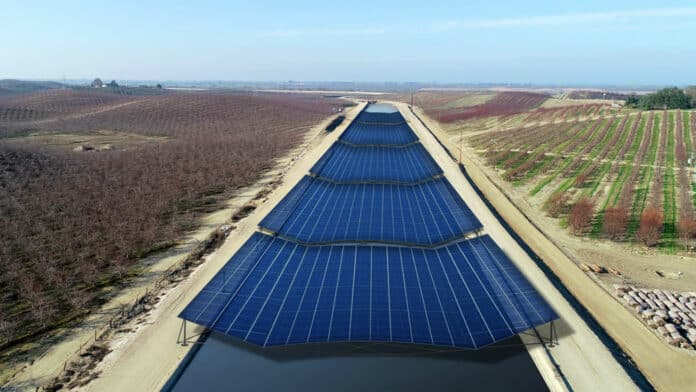Council leaders of the Gila River Indian Community signed an agreement with the U.S. Army Corps of Engineers to begin work on a solar-covered canal pilot project that could save water, create renewable energy, fight climate change.
This $6.744-million project is first-of-its-kind in the United States and will cover a canal in solar panels to conserve water while generating power in drought-hit Arizona.
The first phase of the project will involve the construction of solar panels over a portion of the Community’s 1-10 Level Top canal, covering around 1,000 feet (305 meters) of the canal. This placement of solar panels not only allows the region to make use of the abundant sunlight but also acts as a barrier, which helps to minimize water evaporation in the extreme desert heat.
The benefits of this project are significant. The solar panels are expected to produce approximately 1 MW of renewable energy for the Gila River Indian Community to offset energy needs and costs for tribal farmers. Additionally, they will provide shade for the water beneath them, helping to prevent water from evaporating away due to the desert heat. Since no land needs to be acquired, this project is considerably cheaper than a traditional solar farm.
“This is the type of creative thinking that can help move all of us toward a more sustainable future,” said Tom Buschatzke, Director of the Arizona Department of Water Resources. “Leveraging existing infrastructure such as the Level Top Canal to help provide sustainable, dependable energy – and to do so as part of cooperative partnership like this one – constitutes a win all around.”
Following remarks from Governor Lewis and Assistant Secretary Connor, the parties signed the agreement to begin construction of the project, which is designed to generate clean, renewable energy as well as help reduce evaporation.
The project aims to showcase the viability of installing solar panels on top of canals, which could pave the way for more solar canals in the future. The first phase of the project is set to be completed by the Army Corps in 2025.
According to a study published in 2021 by Professor Roger Bales, known for his significant contributions to a similar solar canal project in California, and his team, covering all 4,000 miles of California’s canals with solar panels could save more than 65 billion gallons of water annually by reducing evaporation. The study also suggested that such an initiative could generate up to 13 GW of renewable energy in a distributed fashion that could cut down on transmission losses.
This highlights the wider implications of similar projects based on canal-based solar energy, not just in Arizona but in other arid regions of the United States as well.
The solar-over-canal projects have been attempted before, with Indian engineering firm Sun Edison being one of the most notable examples. The company had planned to cover 19,000 km of canals in Gujarat state with solar panels, but the financial challenges faced by the company led to bankruptcy in 2016, putting a halt to further expansion.
